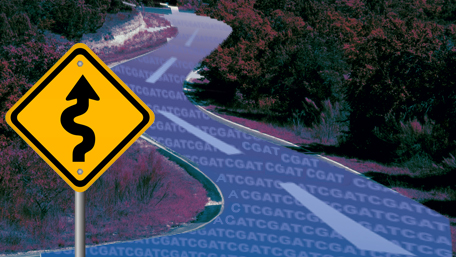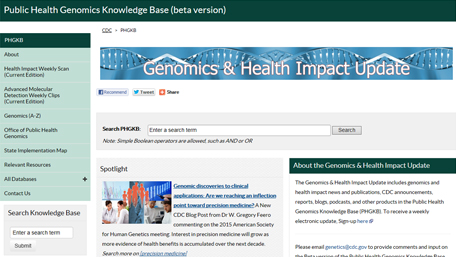Search Results
10 results for rare diseases
Can Genetic Risk Scores Score a Win for Precision Prevention? Time and Rigorous Studies Will Tell

In May 2018, CDC’s Office of Public Health Genomics, the National Cancer Institute’s Division of Cancer Control and Population Sciences, and the National Heart, Lung, and Blood Institute’s Center for Translation Research and Implementation Science held a special webinar titled: “Using Genetic Risk Scores in the Prevention and Control of Common Diseases: Opportunities and Challenges.”
Posted on byGenomics and Obesity: We Need Both Population and Individualized Approaches in the Prevention and Management of Obesity

Obesity is a serious, global public health problem that has increased markedly in the last few decades. As of 2016, 795 million people were estimated to have been affected. Obesity is associated with leading causes of death worldwide—such as diabetes, cardiovascular disease, and cancer—making the search for effective weight management strategies a global priority. Obesity
Posted on by 2 CommentsAre there any shortcuts on the translation highway to genomic medicine?

Note to our readers: A modified version of this blog post has been published in JAMA. Rapid advances in genomics have led to a new era of precision medicine, resulting in a dramatic increase in the number of genomic tests available for research and clinical practice. As of April 18, 2017, the Genetic Testing Registry,
Posted on by 1 CommentFrom Genes to Public Health 1996-2016: The Train Has Left the Station

In 1996, a working group from the Centers for Disease Control and Prevention published an article in the American Journal of Public Health entitled: “From Genes to Public Health: Applications of Genetic Technology in Disease Prevention.” The agency-wide group assessed the implications of the Human Genome Project and related technologies for public health and disease
Posted on byNewborn screening for severe combined immune deficiency (SCID) saves lives and money: a cost-effective public health policy

Severe combined immune deficiency (SCID), also known as “bubble boy disease,” is a rare inherited disorder of the immune system that leads to recurrent severe infections. In the absence of effective treatment, SCID is usually fatal within the first 2 years of life. Treatment by hematopoietic cell transplantation can minimize the devastating effects of SCID,
Posted on byPrecision Medicine: the Arrival of Genomics to the Clinic is the Beginning of a Longer Journey

It has been a year since the announcement of the new US Precision Medicine Initiative. As new funding is awarded to investigators across the country, the pace of assembling the cohort of a million or more individuals will accelerate. This cohort will link information from genomic, behavioral, social, environmental, and health outcomes to discover and
Posted on byDealing with the Genomics and Health Information Overload: Introducing the CDC Public Health Genomics Knowledge Base

Understanding genetic information is increasingly becoming important for health decision making for a variety of health conditions across the lifespan. The amount of genome-related information is growing exponentially, but it is scattered all over the web, peer-reviewed literature, and public and private databases. The CDC Office of Public Health Genomics has launched the beta version
Posted on byThe Ultimate Selfie

Now within reach, our personal genomic sequence offers an incredible reflection of who we are, and great promise to improve human health, but there are serious concerns about embracing it too quickly. Empowered Consumers in the Era of Me If social media is any indication, we, like Narcissus of ancient myth, are surely self-obsessed creatures.
Posted on by 3 CommentsUsing Genomics in Precision Prevention of Breast Cancer

Breast cancer is the most common cancer in women in the United States. It is estimated that 3%-5% of breast cancer cases are hereditary, most often involving mutations in BRCA1 and BRCA2 genes. Such mutations confer high lifetime risk of breast and ovarian cancer. The United States Preventive Services Task Force has issued specific recommendations
Posted on byNewborn screening in the genomics era: are we ready for genome sequencing?

Recent advances in next generation sequencing (NGS) could potentially revolutionize newborn screening, the largest public health genetics program in the United States and around the world. Over the last five decades, newborn screening has grown from screening for one condition (phenylketonuria (PKU)) in one state, to nationwide screening for at least 31 severe but treatable
Posted on by 2 Comments